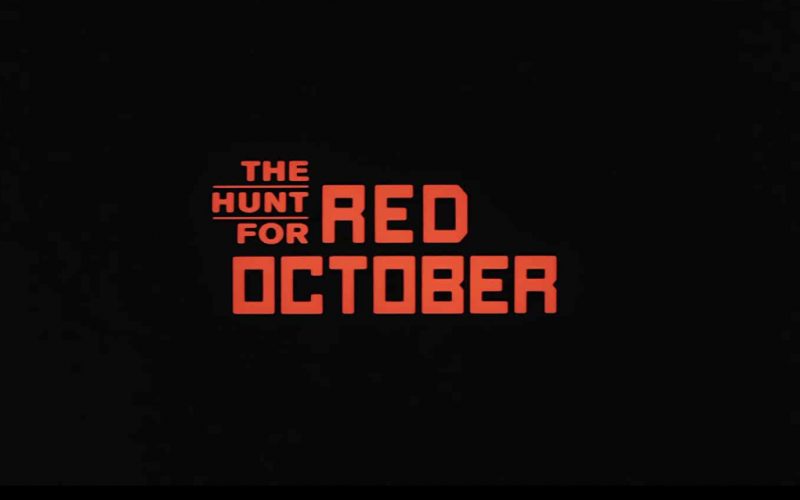The Hunt for Red October (1990).
It’s difficult to imagine today but back in 1990 there was a palpable sense of excitement for many fans when The Hunt for Red October was released. This was the new film directed by John McTiernan, the director of Predator – a raw and exciting Arnold Schwarzenegger action/sci-fi vehicle – and Die Hard – the film that changed the course of Hollywood action film history. He was without doubt one of the most exciting directors of the late ‘80s and into the ‘90s. To add to the anticipation, Red October was also delayed a number of times due to its complex pre-CGI special effects.
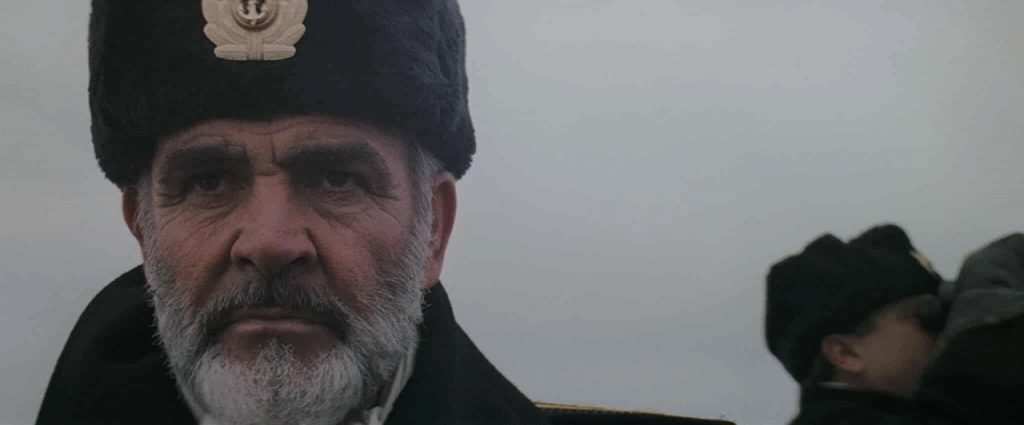
Thankfully the film didn’t let us down. It was a different beast to Die Hard, an action packed thriller that relied as much on brains as it did on brawn. It’s a film about highly intelligent and motivated people playing high stakes poker on the high seas, with the possible fate of the world on the line.
Red October tells the story of a Russian submarine captain, Marko Ramius, played with a very unconvincing Russian accent by Sean Connery. Ramius is put in charge of Russia’s newest weapon in the Cold War – the Red October – a submarine so quiet that it is virtually silent and is capable of sneaking up on the United States without anyone knowing. It is, quite simply, the biggest threat to the US and something that could tilt the scales of the decades long stalemate.
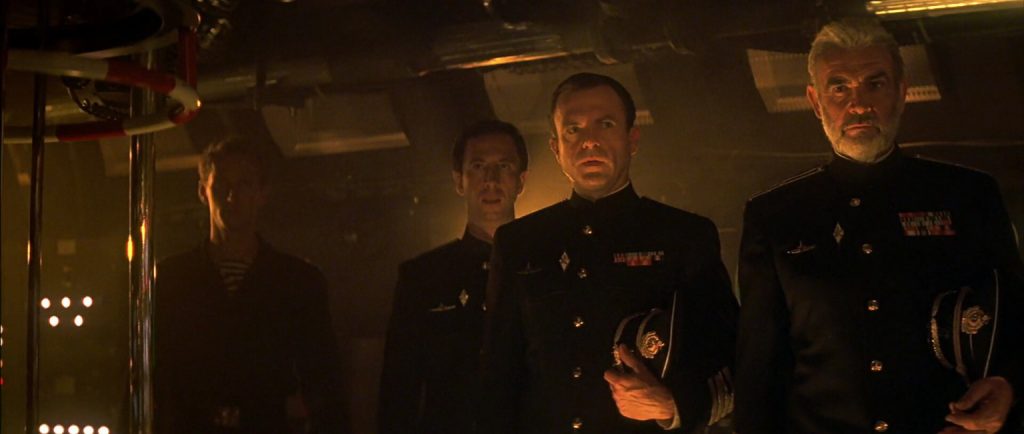
Ramius however, doesn’t follow his orders and effectively steals the Red October before heading straight for the States. Has he gone rogue and wants to start a war? Has he gone insane after the death of his wife? Or is there some other, as yet unknown motive?
In the United States one man, Jack Ryan (Alec Baldwin), is convinced that Ramius wants to defect. The Pentagon is not sure about this most left-field of ideas. They are quite rightly confused. On the one hand there is the very real threat of an attack on the US, however, the fact that almost the entire Russian Navy has been deployed to chase down the Red October, clouds the issue. Ramius is, to the US, a clear and present danger (to borrow the title of another Clancy book/film), but if Ryan is correct and the Russian wants to defect, there could be an opportunity to get their hands on this monster of a submarine and learn its high-tech secrets.
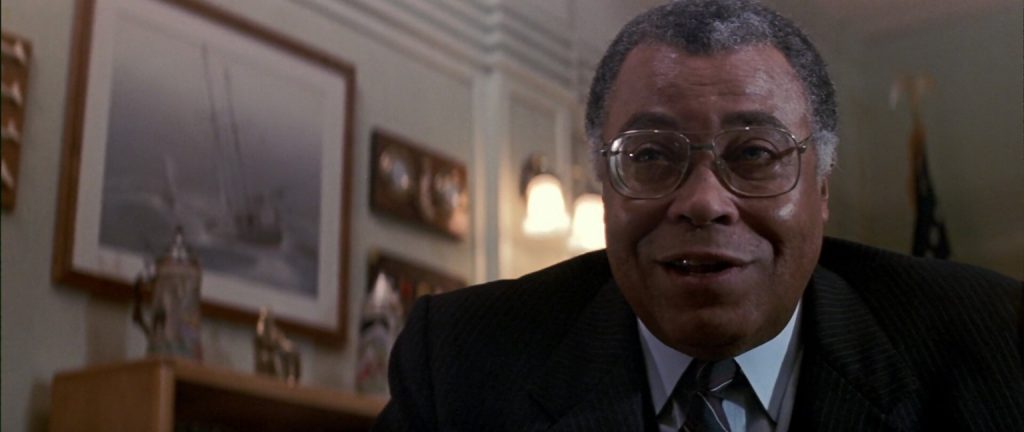
Based on the novel by Tom Clancy, it was said that The Hunt for Red October was impossible to film. It was too complicated, too political and far too detailed to be streamlined into a viable Hollywood blockbuster. It was producer Mace Neufeld who, having read the book, optioned it and spent a year and a half shopping it around Hollywood before Paramount picked it up. He also got the Navy on board too. Initially they were reluctant because they were afraid top-secret technology would somehow be revealed, but they were persuaded in the hope that Red October would do for the Navy what Top Gun had done for the Air Force.
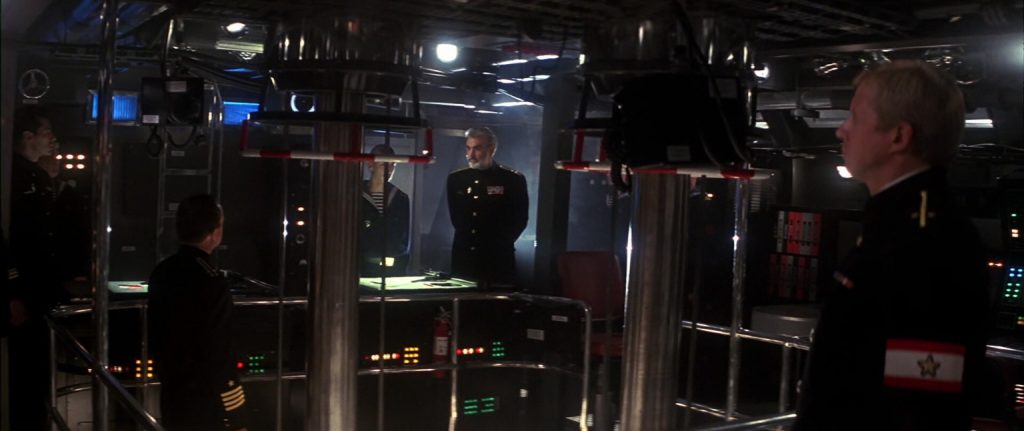
It was filmed on five sound stages at Paramount studios, with the interiors of the Red October and the Dallas (the US submarine that inadvertently crosses paths with the Red October), being built on two 50 square foot platforms that were rigged to tilt on powerful hydraulics in order to replicate the sensation of movement in a submarine. It was a claustrophobic experience with the actors, director and technicians all cramped into a tight space, just as they would have been on a real sub.
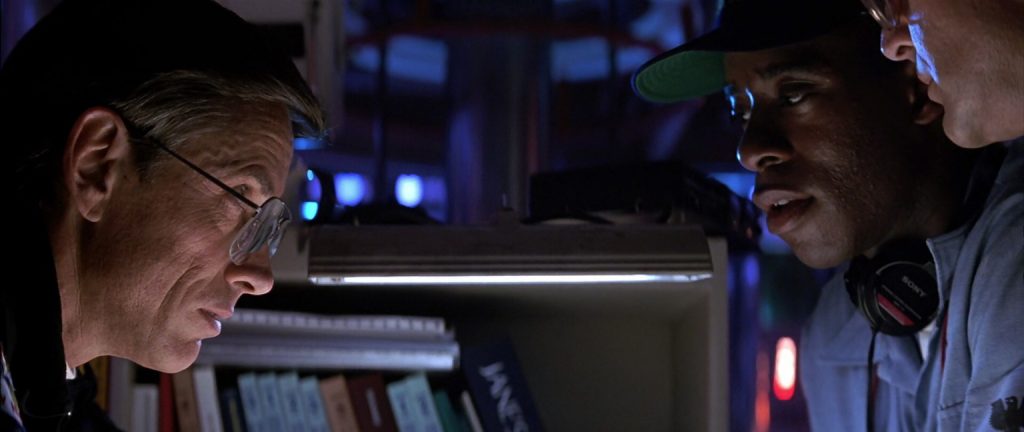
There are a number of reasons this film works so well. Firstly, there is the taut and efficient direction from McTiernan which is top notch. The story is labyrinthine at times, but McTiernan never fails to keep a tight rein on proceedings. He uses very crooked angles to film on the Red October, giving a constant feeling of unease. The deck of the submarine looks futuristic, even by today‘s standards. In reality submarines never looked that clean and high-tech, but cinematographer Jan De Bont fills the screen with gleaming chrome and a multitude of cool looking dashboards with bright lights. If it’s not accurate, I can’t say I really care as it looks great. This is how Russian might was imagined back at the tail end of the Cold War (Red October was released only a few months after the fall of the Berlin Wall which marked the beginning of the end of the Cold War), before we understood how decrepit and out of date some of their technology really was. Just think of Ivan Drago’s high-tech preparations versus Rocky Balboa’s primitive approach in Rocky IV.
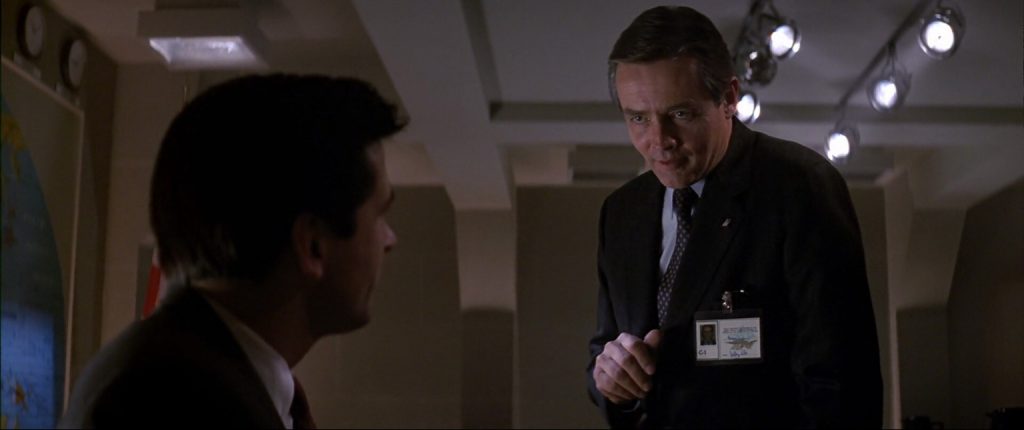
The star of the film was not a star at all at the time but Alec Baldwin is fantastic in the lead role. He was on a streak at the time, having starred in Beetlejuice and Working Girl. His performance captures the geeky courage of Jack Ryan that no other actor has managed to do quite as well. Harrison Ford was great when he later took on the role in Patriot Games and Clear And Present Danger, however, he was already an action hero and we knew what to expect. Baldwin brought a real sense of fragility to the role. Everything he did was tinged with the possibility of failure. He wasn’t a typical action hero, and that, if anything, makes him more courageous.

There’s nothing much to say about Sean Connery that hasn’t been said elsewhere. This is one of the roles in which he is in full command without ever having to extend himself too far. Later the same year he would appear in another Cold War drama, The Russia House, a great film in which he gives arguably one of the best performances of his career. As Captain of the Red October, he is authoritarian without ever being cartoonish. So good is he that we forget that his Russian accent sounds decidedly Scottish, even when he is speaking Russian.
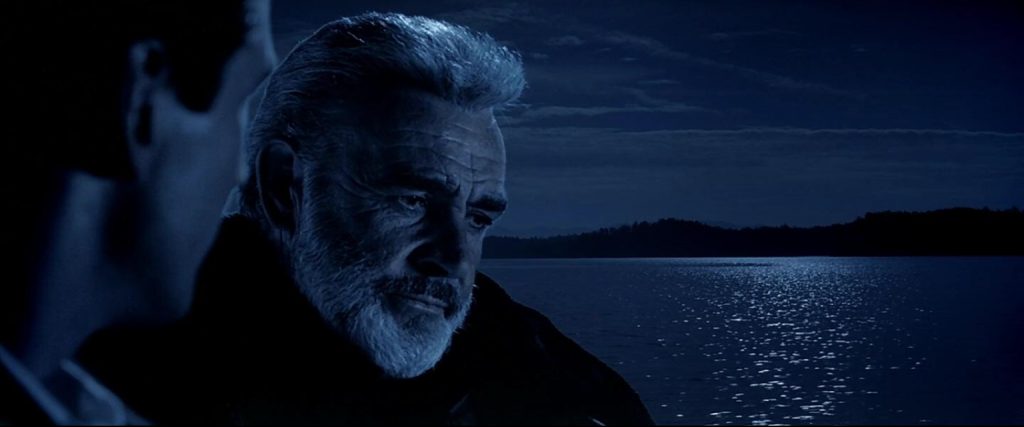
The support cast is superb – James Earl Jones, Scott Glenn, Sam Neill, Tim Curry, Joss Ackland, Courtney B. Vance and more. All are at the top of their game and given ample opportunity, even in the smallest of roles, to make their characters distinctive and interesting.
The music by Basil Poledouris has an omnious Russian quality to it that really serves the film well. The main theme – Hymn to the Red October – is a stirring piece of choral music which hints at classical Russian scores and their national anthem, Gosudarstvennyy Gimn Rossiyskoy Federatsii.
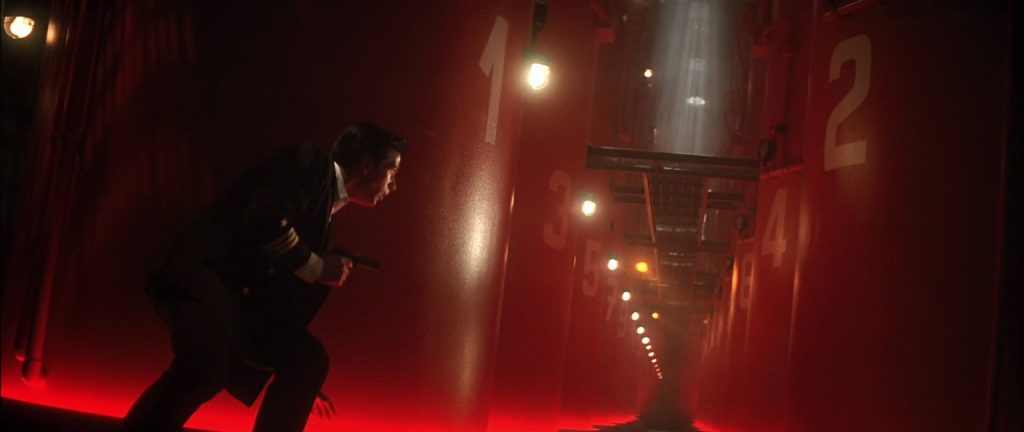
Although not talked about today with the reverence I feel it deserves, The Hunt for Red October was a massive hit in 1990. In a year dominated by sequels, it was the 6th highest grossing film of the year. There could be an argument that the political climate in which it is set is outdated, although it could just as easily be argued that nothing much has changed and it is still relevant.
Either way, this is no reason to avoid it. If you go into it looking for political machinations and intrigue, then there’s plenty of that here; just as if you want good old fashioned escapism. But The Hunt for Red October works best in combination of the two. As I said in the introduction, it‘s a film that perfectly balances brains and brawn.
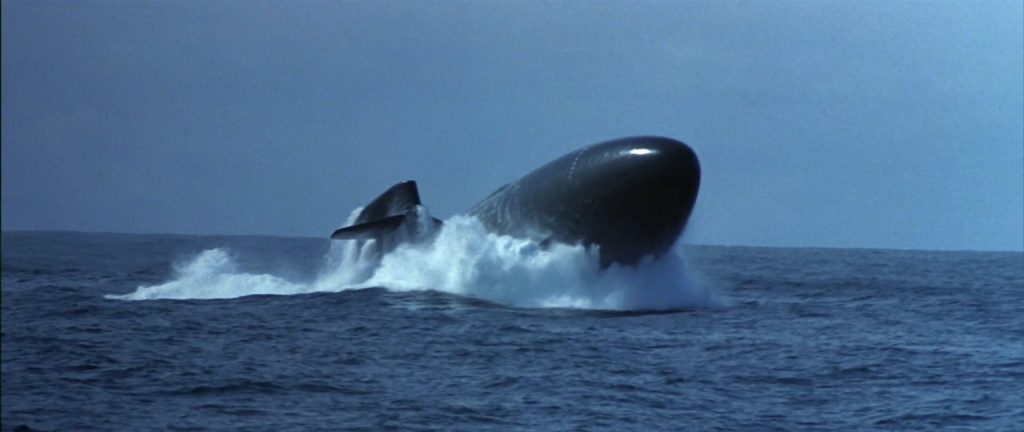
In the recent Film ‘89 podcast episode focusing on the films of 1990 (Episode 50), it was mentioned that, despite us all really very much appreciating The Hunt for Red October, it’s a film that doesn’t often get mentioned which is a real shame as it’s a brilliantly made thriller. I think it’s about time we reclaimed this fine example of late Cold War action in the same way so many other aspects of the late ‘80s and early ‘90s have become en vogue.
So, my message to Paramount is simple; do the film a service and give it a proper release, fully remastered with a ton of extras. It’s too good a film to be forgotten and I’m sure there’s an audience out there for it, even if it may currently be a quiet one.
Film ‘89 Verdict – 8/10

